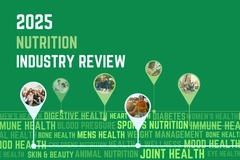
- Industry news
Industry news
- Category news
- Reports
- Key trends
- Multimedia
Multimedia
- Journal
- Events
- Suppliers
Suppliers
- Home
- Industry news
Industry news
- Category news
- Reports
- Key trends
- Multimedia
Multimedia
- Events
- Suppliers
Suppliers
US food system innovations can promote healthier nutritional choices, AHA advisory notes
System-wide improvements towards sustainability and health may positively influence consumers’ food choices

01 May 2019 --- The American Heart Association (AHA) has released a science advisory which suggests that changes in food labeling, as well as industry improvements to the nutritional value of foods, are needed to promote consumer health. The advisory describes how sustainable system-wide innovations to the US food system may promote healthier nutritional habits among consumers. Published in the AHA journal Circulation, the advisory suggests that change is an industry matter, as well as a policy one. The authors also note that improvements in production and distribution can offer consumers a wider base of healthy food choices.
“Innovation in the food system is needed at multiple levels – the food industry, agricultural industry, public health and medicine, policy and among communities, worksites, schools and family. In a healthy food system, the healthy choice would be the default choice,” notes Dr. Cheryl Anderson, Chair of the AHA’s Nutrition Committee and a Professor in the School of Medicine at University of California in San Diego, US.
“To create a healthier and sustainable food system and optimal environments where consumers purchase and consume foods, we need improvements in food production and distribution so that consumers have a wide variety of healthy foods readily available,” she adds.
The AHA advisory notes that when practiced widely, voluntary private sector approaches can favorably impact health behaviors. “Examples include formulating new food products that are lower in calories and/or packaged as smaller serving sizes to reduce population-wide calorie consumption; improving the nutritional value of manufactured foods, product placement of healthier foods on grocery store shelves and pricing strategies to encourage purchasing healthier foods,” Anderson explains.
The advisory comes as sustainability in nutrition systems is gathering more attention. Several studies have shown positive changes in eating patterns and food selection when community-based approaches are initiated. For example, community organizations and school districts have implemented systems such as such “traffic light” labeling systems on foods. Some schools have data showing that students drink more water at school when it is readily available.
 copyright American Heart Association According to a Queen Mary University of London study, published in the journal Appetite, consumers opt for healthier and more sustainable canteen meals when they are labeled with a traffic light system. The study also found that people tend to choose “greener” meals over “healthier” ones. The researchers noted that the traffic light system “works intuitively for most people,” underlining the idea that such a labeling system could spark a shift towards more positive nutritional and environmental habits.
copyright American Heart Association According to a Queen Mary University of London study, published in the journal Appetite, consumers opt for healthier and more sustainable canteen meals when they are labeled with a traffic light system. The study also found that people tend to choose “greener” meals over “healthier” ones. The researchers noted that the traffic light system “works intuitively for most people,” underlining the idea that such a labeling system could spark a shift towards more positive nutritional and environmental habits.
In addition, a recent study found the US Food and Drug Administration’s (FDA) impending mandatory added sugar labeling policy for packaged foods and beverages – set to take effect between 2020 and 2021 – could prevent or postpone nearly 1 million cases of cardiometabolic disease, including heart disease, stroke and Type 2 diabetes, over a 20 year period. This is according to a study published in Circulation. The researchers also noted industry’s significant role, as modest product reformulation was found to be an impactful way to increase potential benefits.
The AHA advisory is titled Dietary Guidelines for Americans and additionally suggests that a healthy eating pattern is at the core of a healthy lifestyle. It can also significantly reduce the risk of heart attacks, heart failure and the most common type of strokes, as well as enhance overall well-being and brain health. Moreover, it should emphasize vegetables, fruits and whole grains; include low-fat dairy products, poultry, fish, legumes, non-tropical vegetable oils and nuts; and limit intake of sweets, sugary drinks and red meat.
The new paper seeks to lay the groundwork for continued innovative thinking about a strategic policy agenda that supports an equitable, sustainable food system that provides healthy, affordable food for all. It does not reflect the AHAs entire strategic policy agenda nor work that is happening at all levels of government. The AHA reports it will continue to draw upon this scientific advisory and other association policy positions and statements to pursue a comprehensive public advocacy approach to nutrition policy.
The role and impact of industry on consumers’ nutritional habits is increasingly highlighted. Earlier this year, a report, published by the Ellen MacArthur Foundation and presented at the World Economic Forum (WEF) in Davos highlighted that by 2050, five million people a year could die due to factors related to the industrial production of food – twice the current number of people killed by obesity. Moreover, a report from the Lancet Commission on Obesity noted that global leaders must take a hard line against powerful commercial interests and rethink global economic incentives within the food system in order to tackle the joint pandemics of obesity, undernutrition and climate change.











